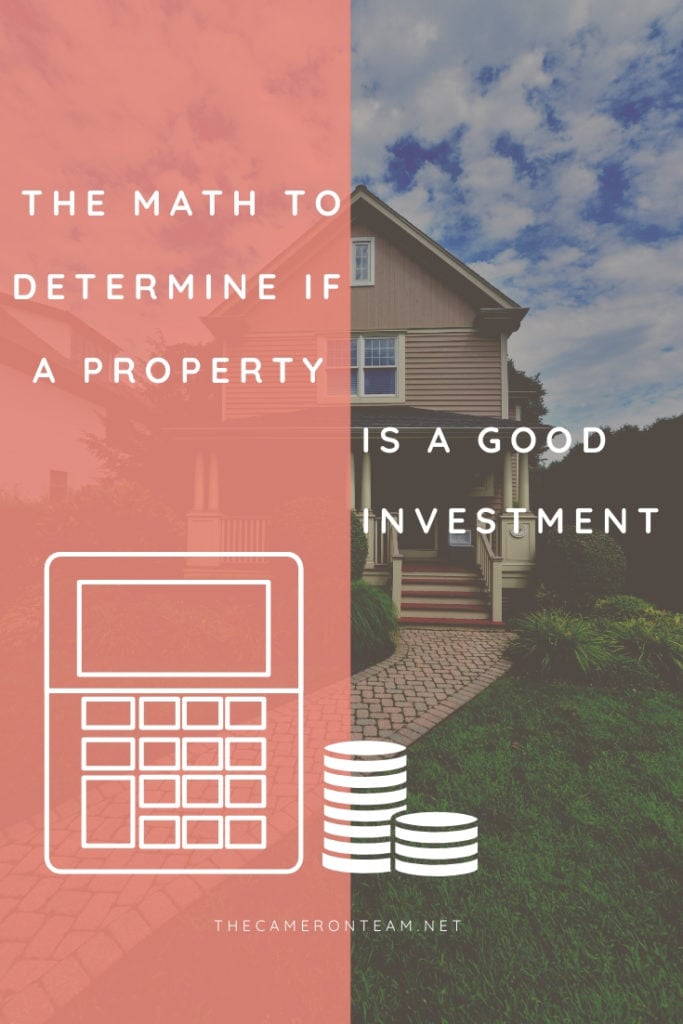No two real estate markets are exactly the same: economic growth, buyer demand, and the overall design of the market’s physical landscape influence how properties are sold and rented. An investor must have a personal understanding of the market (or know someone who does) in order to choose a profitable property. However, when sorting through the multiple homes listed for sale, there are a few real estate math equations that can help you narrow down the properties to those that are worth a closer look.
One-Percent Rule
The quickest ways to weed out properties that don’t fit your financial goals is by using the One-Percent Rule. This rule states that a home should rent for 1% of its total upfront cost. But don’t jump the gun and search for homes fitting a specific purchase price. The total upfront cost includes the purchase price + closing costs + repairs to make the property rentable.
The closing costs can range from 2% to 5%, so it’s important to speak with a lender and confirm what you’ll be paying before you dive into your search. Your repair costs will also differ from property to property, but you can create a listing price range that accommodates the amount you feel comfortable paying.
Once you figure out these numbers, create a search with all homes fitting the purchase price range. If you want to spend no more than $200,000, including closing costs and $1,000 to $3,000 on repairs, create a range of $185,000 to $190,000. This will give you some wiggle room. Of course, you can go lower in hopes of discovering a deal in your target location but be prepared to invest more sweat equity.
Capitalization Rate
Once you get your list down to fewer than 10 properties, it’s time to consider the Capitalization Rate (or Cap Rate). This is how you calculate a property’s potential return on investment (ROI). To do so, you divide the property’s net operating expenses by its purchase price. Here’s the breakdown of steps:
- Take the expected average rent for your property and multiply it by 11.5 (12 months – the missing .5 is a potential 2-week vacancy every year). This is your gross income.
- Add up your costs for utilities, taxes, maintenance, and any other annual expenses the property may have. Do not include a mortgage payment. Subtract the total from your gross income. The result is your net income. Note: The example shown below uses what the average American pays, which will likely be different from your own costs.
- Divide your net income by the purchase price. This is your cap rate.
- Multiply the cap rate by 100 to create a percentage of return.
A “good” cap rate varies between real estate markets. A cap rate percentage considered good in San Francisco may be bad in Wilmington, NC. That’s why it’s best used for comparing properties of a similar nature in the same market. However, you want the percentage to be as high as possible.
Vacancy Rate
One more thing to consider is an area’s vacancy rate. This can help narrow down your search to specific communities or condo complexes that you want to target. However, accurate figures can be difficult to come by due to the nature of private property, and this may be more suitable for condo complexes in vacation areas.
Basically, the vacancy rate is the number of vacant properties multiplied by 100 and divided by the total number of units.
Different types of properties have different vacancy rates:
- Vacation Rentals: 45%
- Short-Term Rentals: 30%
- Multifamily Properties: 5.5%
- Single-Family Properties: 5%
If the community or condo complex has a rate higher than what’s listed above, consider purchasing elsewhere, because the area is over-saturated with rentals.
Conclusion
These simple math equations can help you determine if a property will be a good investment. Of course, pinpointing a sound purchase takes more than an understanding of math. It also requires knowledge of the local real estate market, because non-quantifiable influences, such as public improvement projects and new construction, also affect the value of properties. A professional real estate broker is working the market every day and can guide you to areas with tract records of stability.
If you’d like help purchasing an investment property in the greater Wilmington area, give us a call at (910) 202-2546. We’re happy to help you narrow your search and guide you through the purchase process.
[the_grid name=”Home Buyer Tips”]







